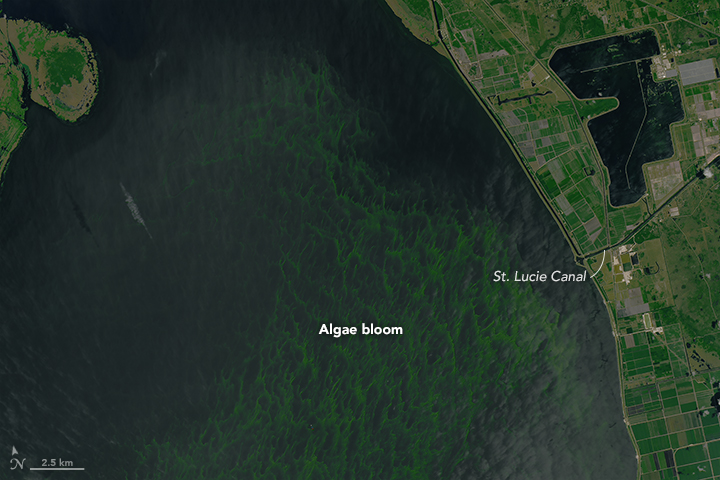

Anyone who has experienced algal blooms knows how troublesome they can be. The appearance of a thick, green eyesore is just the beginning. The air becomes putrid and unbearable for humans while aquatic life is put into a potential life-or-death situation due to a variety of toxins.
Unfortunately, for residents of South Florida, algal blooms have become a regular part of daily existence. Last week’s declaration of a State of Emergency in two counties may have put the issue in national headlines; however this is not a unique situation. This phenomenon is expected and regular monitoring occurs in this region to determine the potential for troubles.

The reason this area is particularly vulnerable to attack is the presence of a nearby freshwater lake with capability of allowing algae the opportunity to thrive and spread. It’s called Lake Okeechobee and it is 730 square miles making it the second largest freshwater lake contained in the United States. Despite its immense area, it is incredibly shallow with as the deepest point only reaches 12 feet. This combination of size and lack of depth make it a perfect breeding ground for a variety of surface-dwelling organisms including algae.
But this isn’t the only requirement for algal blooms. In order for these tiny organisms to thrive, nutrient sources such as nitrogen and phosphorus need to be excessively abundant. The lake has been experiencing the continual introduction of these elements, a process known known as eutrophication, for years as a result of a variety of human actions. In the United States, the environmental consequences of mass nutrient addition on algae have been studied for well over forty years.
Although one might think human input equals more algal blooms, researchers have had troubles correlating human activity with blooms on Lake Okeechobee. This enigma can only be due of one of two possibilities. Either the lake was naturally eutrophic or the events were multifactorial with human inputs playing a role.
It turns out the answer is a bit of both. Looking historically at Lake Okeechobee (as far back as the 19th Century), algal blooms have been recorded. However, they have not been to the extent of more recent algal growths such as those in 1970 and 1986. These both covered up to hundreds of miles of the lake. To achieve these masses, human introduction has to have happened.
With this knowledge in hand, the answer to the problem may seem easy enough: reduce human-based introductions of nitrogen and phosphorus. However, controlling these factors is not easy as most are due to necessary human activities such as agriculture. Curbing these levels would require changes in other areas of economic activity, which may not be readily welcomed.
The conundrum leaves those counties around Lake Okeechobee in a rather difficult place. Without a change in the way the entire region operates, which could negatively affect the economy, they can expect to have regular algal blooms. Yet, with each bloom comes a reduction in water quality as well as other possibly economic inputs such as tourism dollars. The result is a catch-22 for the people in charge of protecting the safety of these regions and of course, for the people living there.
The only option at hand appears to be aiding in the reduction of toxins if only to protect life when blooms happen. At the moment, there are numerous efforts underway to help protect the Lake from eutrophication such that it can be restored to a more pristine water quality. Many of these were started over twenty years ago but due to the rise in blooms, have become more active and funded. The progress may take years and still won’t completely rid the lake and surrounding areas from the algal menace. Yet, over the coming decade, if these methods are indeed implemented, the observations of algal blooms will return to the days of the 19th century when they were rare and small. In turn, this can help to minimize or perhaps even prevent the occurrence of those unwelcome states of emergency.
